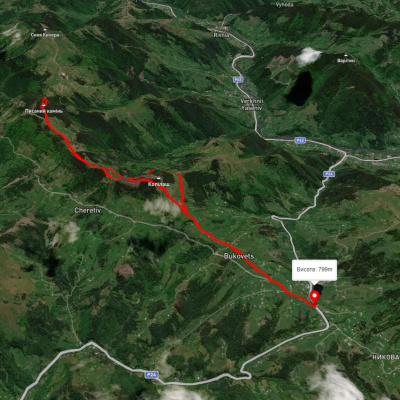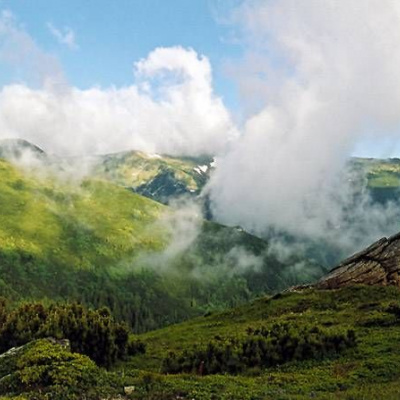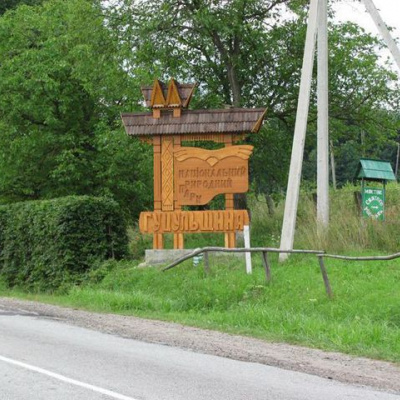Hutsulshchyna National Nature Park Kosiv
The Hutsulshchyna National Nature Park is located within the Kosiv district of Ivano-Frankivsk region in the forested part of the Pokutsk-Bukovyna Carpathians. It is on this territory that the ancient crafts, customs, and rituals of the Hutsuls are best preserved. To protect both nature and the local Hutsul culture, a nature reserve was created in 2002. The park stretches from northwest to southeast for about 29 km and from northeast to southwest for 20 km.
Even before the national park acquired its current status, several smaller nature reserves of local significance operated on its territory. As a result, the large NNP actually absorbed the previously established protected areas. However, their status remains as part of the NNP.
The territory of the Hutsulshchyna National Nature Park includes the following protected areas of Ukraine:
- Grehit, a landscape reserve of local importance;
- Local Nature Reserve "Kamenystyi Ridge", landscape;
- Kamenets Local Nature Reserve, forest;
- Local Nature Monument "Modryny", botanical;
- Local Nature Monument "Beech Plantation Standard", botanical;
- Local Nature Monument "Tsukhanivske", botanical;
- Lebedyn protected tract;
- Protected tract "Hayivka";
- Protected tract "Khomynske";
- Protected tract "Dilok";
- Protected tract "Kamenets";
- Protected tract "Rotul";
- Protected tract "Utoropy";
- Local natural monument "Waterfall on the Rushyr River", hydrological;
- Local natural monument "Sulphurous spring", hydrological;
- Arboretum "Dendrarium".
The relief is complex and heterogeneous, it was formed over a long period of time in the process of raising from the bottom of the former ocean layers of different geological epochs, which under the influence of exogenous factors acquired their modern appearance. The foothill upland region, the Pokuttya Predkarpattya, with predominant altitudes of 350-500 m above sea level, and the Outer Carpathians region are distinguished here. The low- and midland ranges stretch in parallel ridges from northwest to southeast. The mountain ranges mostly have wide ridges and relatively sloping slopes. Between them lie wide intermountain hollows. This character of the relief contributes to the accessibility and convenience of recreational development of the Park's territory.
The height of the mountain ranges ranges from 709 to 1476 meters above sea level. The main ranges are Kamianistyi, Karmatura, Khomenskyi, Brusnyi, Sykhlin, Sokilskyi, Ploskyi, Maksymets, Bukovets-Ritskyi. In the western and southwestern directions, the altitudes increase and reach 1000 meters or more (Gregit - 1471 m, Lysyna Kosmatska - 1464 m, Igrets - 1374 m). The plain part is 300-450 m above sea level, and the mountainous part is 700-1000 m. The largest rivers flow across the ranges: Cheremosh (80 km), Pistynka (56 km), Rybnytsia (54 km), Liuchka (24 km).
The highest peak of the Hutsulshchyna NNP is Mount Gregit, 1472 meters above sea level. Its slopes are covered with stone placers, locally called "gregots." Some of the ridges, such as the Sokilskyi ridge, have cliffs 20-40 meters high. At its foot is a unique spruce virgin forest. In general, the low mountain ranges are covered with beech and hornbeam forests, and fir and beech trees grow high in the mountains. In autumn, when the leaves begin to turn yellow, it is especially beautiful here.
The territory of the park is dotted with numerous rivers and mountain streams. The largest of them are Liuchka, Pistynka, Rybnytsia, and Cheremosh. There are also many small rivers and mountain streams, such as the Pichnyi stream. All of them are right tributaries of the Prut River. The three river systems - Rybnitsa, Liuchky and Pistynky - occupy approximately the same area within the district, on average a little more than 25%, the Cheremosh basin occupies a slightly smaller area - about 20%, and the basins of the other two rivers - Tsutsulyn and Berezivka - 2.9% and 0.5%, respectively.
The lakes on the territory of the Hutsulshchyna NNP are insignificant. There are six small lakes in total. Each of them is quite unique. The most common type of lake hollows are landslide hollows. Four of the six existing lakes in the area belong to this type.
- Lake Lebedyne (Lebedyn) is located on the southern slope of the Lebedyn ridge, at an altitude of 650 m, among beech forests. The area of the water mirror is 3500 m², the shape of the lake resembles an obtuse triangle. Assumptions about its karst or glacial origin, which are available in the popular science literature, do not stand up to criticism. A detailed examination revealed that the lake has an unusually large depth for its modest size, reaching 28 meters according to unverified data (a 12-meter pole did not reach the bottom). The lake is of landslide origin. On the northern side of the ridge, a cliff wall is clearly visible along the ridge, about 100 m long. The slope above the lake is highly exposed, rocky, and very steep. The ridge crest is asymmetrical. There are several other closed dry stony depressions nearby. The lake is a sewage lake. It flows into the Palytskyi Stream. Due to the high amount of precipitation, the lake undergoes intensive decay processes that enrich the water with hydrogen sulfide. The water transparency is low.
- Lake Mertve is located on the neighboring Karmatura (Kormitura) ridge, almost on the very crest, at an altitude of over 800 meters. The lake is small in size, pear-shaped, 30-60 meters wide and about 70 meters long. The lake is of the landslide type. On the northwestern side, a breakaway wall is clearly visible. The lake is shallow, heavily overgrown with trees and shrubs. The entire middle of the lake is occupied by a large swampy island, the water mirror is left only at the edges. The lake is a sewage lake, with water seeping through a rocky dam into the Korovyok River. Apparently, in the past, the lake consisted of two different water basins and was larger in size. The upper basin is a narrow, long, dry gully with a flat bottom.
- Zipyakove Lake was formed relatively recently as a result of a large landslide that occurred on the southwestern slope of Zinyakiv Verkh. The lake is quite small, but quite deep. There are overturned trees and boulders everywhere, and the terrain is very difficult.
- Lake Dzvyniachka is located on Mount Ovid, near Stari Kuty, at an altitude of about 600 meters. The lake is 8 m long, 7 m wide, and 1.5-2 m deep. Obviously, the lake is also of landslide origin.
- Lake Vynnyshche (Window) near the village of Liuchy is believed to be of karst origin. The depth is up to 2 meters, the shores are steep, and it is surrounded by beech forest on all sides.
- Lake Banske is located in Kosiv, on the territory of the former Hutsulshchyna factory. It was formed on the site of a former salt mine - a "bathhouse". It is of man-made karst origin. The area of the water mirror is 30,000 m² and its depth reaches 10 meters. Until 1938, there was a salt mine in its place, and until 1939, a health center was based on its premises. The lake is located in the western part of Kosiv on the last high terrace of the left bank of the Rybnytsia River, at the foot of the spurs of Zinyakiv Verkh (Sopka) Mountain, at an altitude of 400 m above sea level. The lake is almost round in shape, the coastline is very winding with many shallow floodplains. This shallow coastal zone is heavily overgrown with reeds and cattails. The southern part of the lake, which is located on a terrace towards the river, is shallower because it has a larger area of overgrowth. The northern part, which is adjacent to the slope with traces of a 15-year-old landslide, sinks more rapidly, as the area of overgrowth is insignificant. The slope itself is sparsely forested, with traces of an older landslide in its eastern part above the lake. In addition to clay, thin layers of gypsum are found under the sod layer. The area of the water mirror is 30 thousand m². There are fish in the lake. There are two bridges for fishermen. The bottom is not explored, so people do not swim in it.
The relief of the foothill area is favorable for the construction of ponds. According to surveys, there are 83 ponds of various sizes in the district, with a total area of about 105 hectares. The largest pond complex was built in the Volytsia River valley - 7 ponds with a total area of 30 hectares. There are also 7 ponds, but smaller in size, built on the Tsukhaniv River. Two large ponds with an area of 4 and 5 hectares were built on the Chernyatyn River. The area of two ponds on the Nasarat River is 10 hectares. The other ponds are small. There are many dug ponds in Rozhnovo, Verbivka, Kobaky, and on the outskirts of Kosiv.
The Hutsulshchyna Nature Park is home to a wide variety of plants, 65 species of which are listed in the Red Book of Ukraine. There are also many representatives of fauna here: Bears, roe deer, deer. 16 species of animals and 4 species of insects are endangered.
The Hutsulshchyna National Nature Park has an extremely high recreational potential. It is located in a picturesque forested part of the Pokutsko-Bukovyna Carpathians, which is perhaps the most interesting region of Ukraine, where the ancient original crafts, trades, traditions, and customs of the Hutsul ethnic group have been preserved to a great extent. The products of local craftsmen - carvers, furriers, Easter egg painters, mosaic artists, ceramics makers, weavers, embroiderers, etc. - are in great demand and popular.
The park has a well-developed tourist and recreational infrastructure, with many recreation centers, resorts, and sanatoriums. The most famous of them are the Carpathian Dawns tourist complex in Kosiv and the Silver Falls tourist center in Sheshory. The Park has developed and marked 12 ecological and educational trails. The routes are laid to the most attractive places and are accessible to all categories of visitors. Along the routes, there are places for short-term rest with forest furniture and information stands. The routes "To the observation deck on Mount Ostryi", "To the hydrogen sulfide spring on the Volytsia River", "To the Rosokhata meadow" and "To Lake Lebedyn", "To Mount Mikhalkiv" are particularly popular among tourists. Last year, a new comprehensive ecological and educational trail "Four Roads" was set up. The route includes the trails of the Kosiv and Sheshory Nature Conservation Research Departments of the Hutsulshchyna National Park, including the existing ones, "To the Rocky Mountain" and "To Klyfa", and two new ones, "To Zinyakiv Top" and "To the Sheshory Gooks". There are ski slopes with ski lifts on the outskirts of Kosiv and Sheshory.
The development of recreational facilities uses elements of Hutsul architecture that are organically combined with natural landscapes, creating masterpieces of architectural and park art. The Hutsul architectural style is characterized by originality and high aesthetics. The Hutsul churches - "hrazhdy" - that can be seen in almost every village of the park are known worldwide for their elegance and harmony.
Kosiv district is the artistic center of the Hutsul region - it is the center of original customs, life and culture of the Hutsuls, their arts and crafts. The products of local craftsmen: carvers, furriers, Easter egg painters, mosaic artists, ceramists, weavers, embroiderers, etc. are in great demand and popular. The original ancient crafts and trades, as well as colorful clothing, original music and song culture of the Hutsuls are of great interest and are a gem of Ukrainian and European culture.
Since 2002, the project "Tourist and Recreational Complex "St. Nicholas' Estate" has been implemented on the territory of the Hutsulshchyna National Nature Park. Today, the St. Nicholas Estate is the largest recreational facility in the structure of the Hutsulshchyna National Park, performing not only recreational but also educational, spiritual, environmental, sports and health functions. The central object of the estate is the estate of St. Nicholas, where the post office, the chambers and the chamber of the Wonderworker function, as well as a room-museum of nature, a room of New Year and Christmas toys, and a children's toy workshop. Near the estate of St. Nicholas, there are houses of masters of folk artistic crafts, where various master classes are held during festivals. The estate has a place for the St. Nicholas bonfire.
Around the fire are the chairs of the twelve human virtues. There is also a children's playground near St. Nicholas' house with various slides, swings, ladders and an artificial turf sports field. There are also gazebos and resting places on the territory of the Estate. Many interesting events are organized and held at St. Nicholas' Estate throughout the year. For example, on December 19, the New Year and Christmas Toy Festival is held, on May 22, the Spring St. Nicholas Day, and during Christmas and Easter, there are caroling, nativity scene, Easter eggs, and many other themed contests and festivities. The Estate also hosts various conferences, seminars, meetings with famous people and other events on art and culture, education and science, and environmental protection. Over the years of its implementation, the St. Nicholas' Estate project has gained not only national but also international recognition.
The megalithic sacred objects are of great historical and educational importance for visitors and residents of the region. Professor M. Kuhutyak (2007) described seven megalithic sanctuaries on the territory of the Kosiv region, which are more than three thousand years old. Among them, the calendar and astronomical sanctuary (an astronomical observatory older than Stonehenge) centered on Lysyna Kosmatska and the Ternoshorsk sanctuary of fertility and the birth of the new year with a statue of a pregnant woman weighing over 100 tons and over 10 meters high deserve special attention.
The Cheremosh River, which flows along the southeastern border of the park, is especially popular among water sports and recreation enthusiasts. It is associated with many legends and tales, and is sung by poets and songwriters. The picturesque Cheremosh is one of the hallmarks not only of the Hutsul region, but of the entire Ukrainian Carpathians.
A large part of the park's territory is covered by forests, which are based on hardwoods. The most common species found here are beech, oak, hornbeam, and spruce. Currently, 874 species of higher vascular plants have been found within the park, and more than 60 species are listed in the Red Book of Ukraine (mountain arnica, Heifel saffron, cedar pine, berry yew, etc.).
The fauna of the park is also quite extensive, with more than 50 species of mammals, about 172 species of birds, 14 species of amphibians, etc. There are also rare predators such as brown bear, lynx, and forest cat. In addition to wildlife, Hutsulshchyna attracts tourists with its color and cultural heritage, ancient crafts and trades. One of them is Hutsul ceramics, which has gained popularity far beyond Ukraine. The clay products of local craftsmen are famous for their unique painting and unique production technology used by many generations of potters. The national park's information center has a number of museum rooms, where collections of medicinal plants, geological formations, insects, etc. are exhibited. There is also the St. Nicholas Estate with a museum of Christmas and New Year's toys on the territory of the national park.
In Hutsulshchyna, you can find many types of recreation and entertainment. Among the most popular are hiking, picking mushrooms and berries, horseback riding, rafting on the Cheremosh, visiting master classes and museums. The park has developed 7 ecological trails of various lengths from 1 to 7 km. A number of themed events and festivals are held on the territory: "New Year and Christmas Toy", "Mountain Rainbow", "Ludynie", "Painted Dzbanik", etc.
The national park has its own apiary where you can buy honey and bee products. The tourist infrastructure of the Hutsulshchyna National Park, as well as the Carpathians in general, is well developed. Each settlement has different options for accommodation, food and entertainment. The Park was the location for the films "House of Flying Daggers" by Chinese film director Zhang Yimou, "Iron Hundred" by Oles Yanchuk, as well as tourist and advertising videos, etc.
The Hutsulshchyna National Nature Park is a good place to relax. The administration of the reserve is based in Kosiv. The town can be reached by bus from Ivano-Frankivsk.
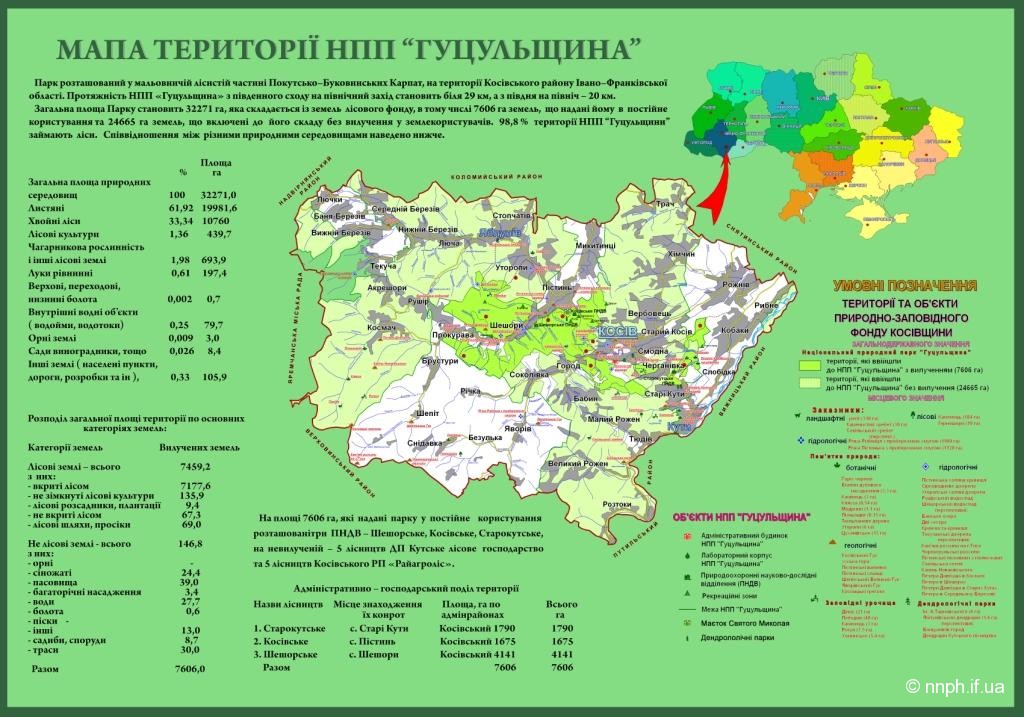
Accommodation around Hutsulshchyna National Nature Park Kosiv:
Які маршрути проходять повз Hutsulshchyna National Nature Park Kosiv?
Пропонуємо пройти такі туристичні (пішохідні) маршрути через/біля Hutsulshchyna National Nature Park Kosiv: пер. Німчич - Протяте Каміння, Смугарські водоспади, Шешори - Росохата, Писаний Камінь – с. Буковець, с. Буковець – Писаний Камінь – с. Буковець, с. Космач, через г. Ротило, г. Грегіт, г. Біла Кобила до с.Буковець
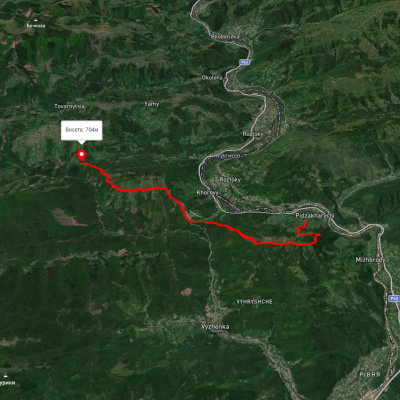
пер. Німчич - Протяте Каміння
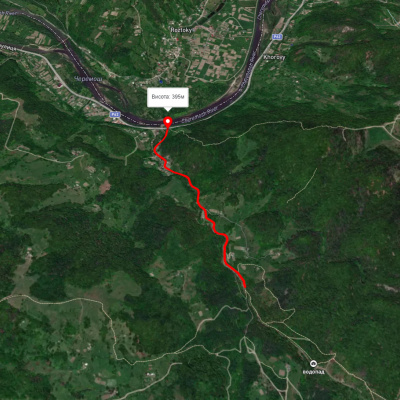
Смугарські водоспади
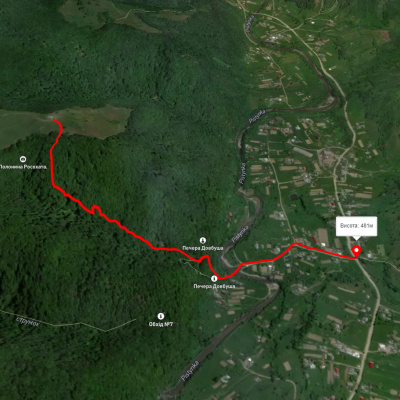
Шешори - Росохата
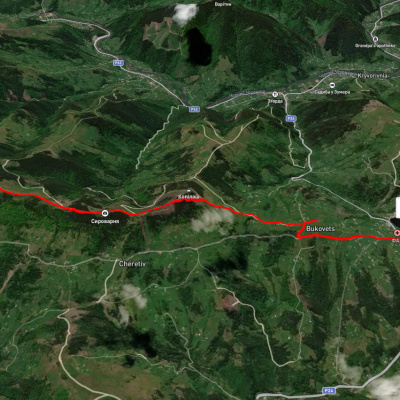
Писаний Камінь – с. Буковець
